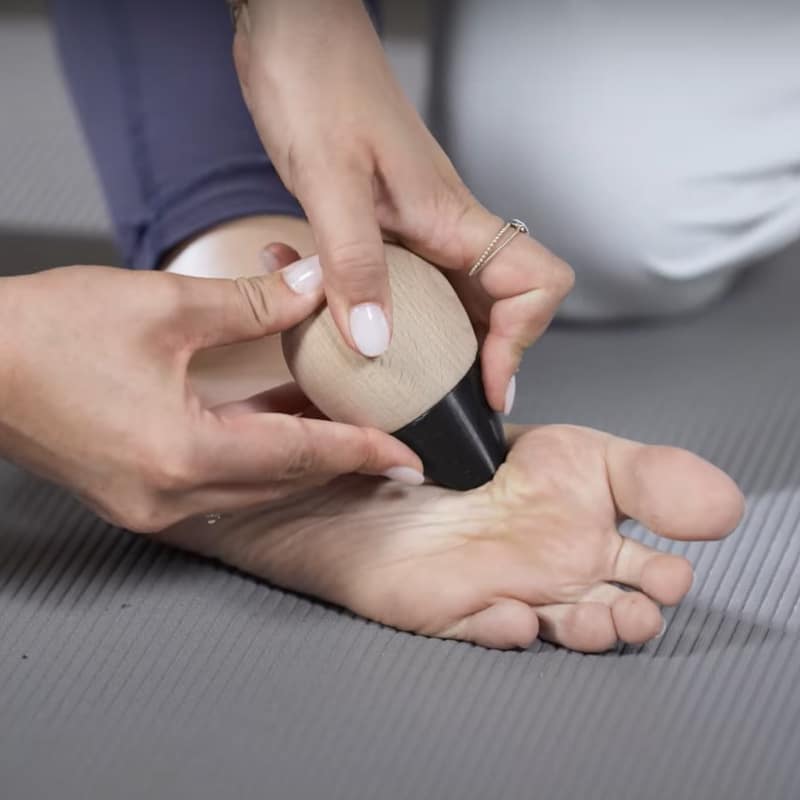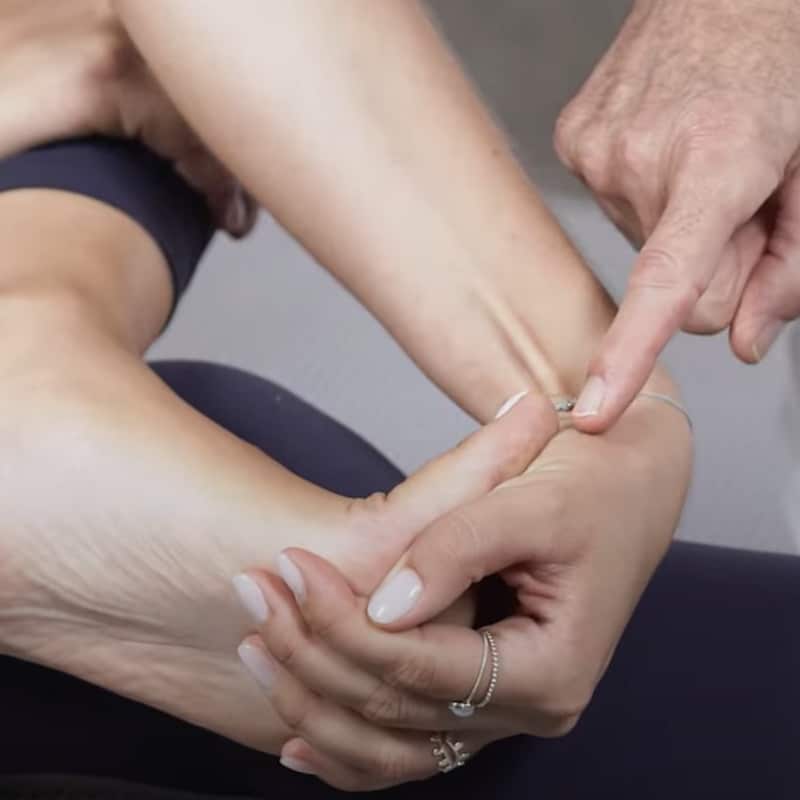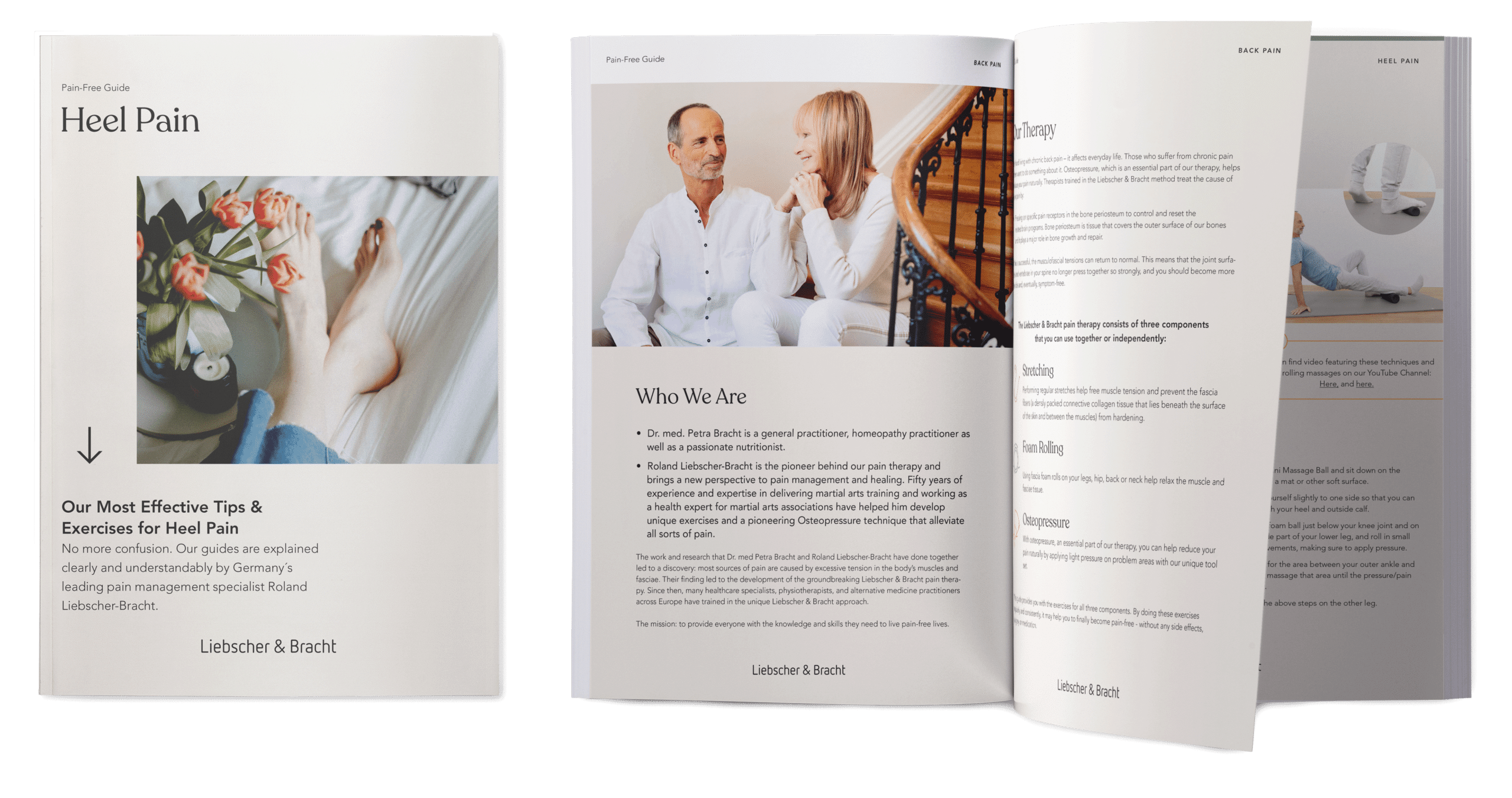Heel Spur exercises
Body Part:
Foot
Equipment:
Osteopressure Tool (Spherical Handle)
Level:
Beginner
Body Part:
Foot
Equipment:
Osteopressure Tool (Spherical Handle)
Level:
Beginner
You wake up and greet the morning with a stretch and yawn. Then you get out of bed, and your first step of the day is greeted with shooting pain in your heel. Not the best wake-up, and this is just the beginning of your day. If your first step of the day kicks off jabbing foot pain and difficulty walking, you may have heel spurs. The condition is a common cause of foot pain and almost all patients respond to conservative, nonsurgical therapy.1) We’ve developed a 5-minute exercise routine that helps relieve the pain and swelling of heel spurs — so you never miss a step. All you need for our routine is the spherical handle with the pointed and rounded attachments from our Osteopressure tool set. If you don’t have our tools, try using a whittled cork.
Visit our online shop to get your Osteopressure tool set. We’ve got lots of pain-relieving tools and products waiting to be added to your cart.
Take me to the shop.What Are Heel Spurs?
A heel spur is a pointed, bony growth that forms on the underside of your heel that results from a build-up of calcium deposits.
Causes & Symptoms
Heel spurs develop over time. The most common cause of heel spurs is long-term strain on your ligaments and muscles from walking, running, and jumping (particularly on hard surfaces). The soft tissue in your heel wears out, and spurs begin to form. Heel spurs may be caused by plantar fasciitis, a condition that results from irritation of the plantar fascia.2) (The plantar fascia is a band of tissue that runs along the bottom of your foot, attaching the toes to the heel bone.) Wearing worn-out or unsupportive shoes can also cause heel spurs.
Symptoms of heel spurs include sharp pain in the heel area (especially when you stand), inflammation, swelling, tenderness, warmth radiating from the affected area, and small, bony protrusions. Sometimes there are no symptoms.
To maximize the benefits of our heel spur treatment, exercise intensely and intelligently. Challenge yourself to perform each exercise at a high intensity that may produce an uncomfortable sensation. (This is a sign that the exercises are working.) However, do not press or stretch to the point that your breaths become short and shallow or you find that you’re holding your breath or clenching your teeth.

For the first part of this exercise, you’ll need our Osteopressure tool with the spherical handle and the pointed attachment.

For the second part of this exercise, remove the pointed attachment and replace it with the rounded attachment.

Give yourself the time to relieve heel spur pain. Perform our 5-minute heel spur treatment 6 days a week for 3 weeks. You’ll feel the difference when your feet greet the floor.

Discover how to identify which foot condition you have, learn all about the causes and symptoms, and find out which of our exercise routines is best to manage your foot pain.
Learn About & Manage Foot PainOur feet are a high-performing team. But with all the wear and tear, aches, cramps, and inflammation are common. These stretches help keep your feet at the top of their game.
Relieve Foot Aches & Pains NowIf your feet ache frequently, tire quickly, or are prone to swelling because of fallen or sunken arches, our 8-minute routine can help strengthen your arches and defeat foot pain.
Strengthen Your Foot Arches Now